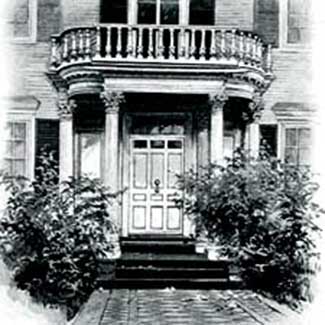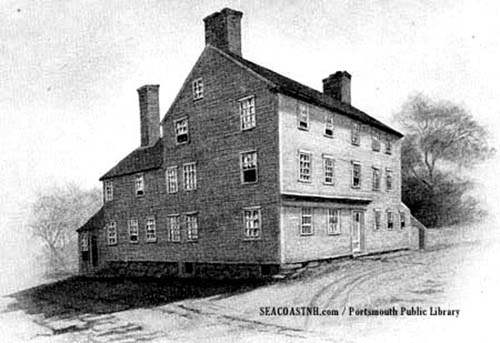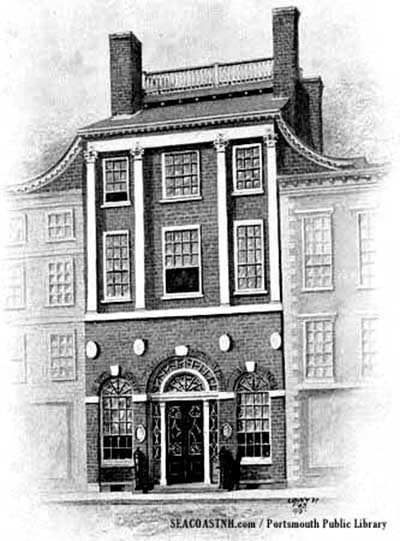Helen Pearson Illustrated Architecture
by J Dennis Robinson
Portsmouth is unique. New Hampshire’s only seaport, soon to celebrate its 400th anniversary, blends charm and culture with vitality and commerce. In this series historian J.Dennis Robinson profiles people who influenced, honored, pictured, preserved, and promoted the historic architecture of “The Old Town by the Sea.”

An illustration of the John Langdon Mansion by Helen Pearson from VIGNETTES OF PORTSMOUTH
If Sarah Haven Foster, the author of the first Portsmouth walking guide, was the “grandmother” of local tourism, then Helen Pearson was her rightful heir. Both were in love with early seacoast architecture. Both were also accomplished artists. But Sarah’s Portsmouth Guidebook (1876) had arrived before local printing machines could affordably duplicate her pictures. By 1913, however, new technology made Pearson’s Vignettes of Portsmouth possible.
Helen Pearson’s cloth-covered volume included 23 intricate illustrations. Her soft, delicate pencil drawings have a photographic realism. Her vignettes, each with a short written history, included Portsmouth Athenaeum. John Langdon’s mansion, Portsmouth Academy (now Discover Portsmouth), Pitt Tavern, Lord House (now Portsmouth Historical Society), the Moffatt-Ladd and Warner houses, St. John’s Chapel (later razed), and Fort William & Mary. The original illustrations are now part of the Portsmouth Public Library collection.
No photograph or drawing of either woman is currently preserved. Like most local women of their time not born or married to well-known men, their lives have all but faded — but not yet their work. Helen was about 14 years old when Sarah Foster visited her mother’s greenhouse in Portsmouth. Helen eventually took over her mother’s greenhouse on Broad Street. Like Sarah, she never married, and lived at the same address until her death in 1949.
“I used to call on her,” the late Portsmouth historian Dorothy Vaughan told this writer many years ago. “She [Helen Pearson] was a delightful woman with a sort of a flourish. She had a hot house on the back of her home on Broad Street where she lived with her brother Dan. They raised wonderful flowers.”
Like Sarah, Helen Pearson drew pictures of flowers and of buildings. She was fascinated by the architecture of both. The two women were drawn to the ephemeral designs of nature and the longstanding design of the region’s historic buildings. Their paper guidebooks, like flowers, did not last long. Only historians, archivists, and collectors are aware of these two Portsmouth guidebooks today. But their work, for a brief time, inspired the preservation of many of the cities most important structures.
J. Dennis Robinson, is the author of a dozen history books including Mystery on the Isles of Shoals, available in local stores and online at Amazon.com. You can follow his history posts on Facebook here.

An illustration of the William Pitt Tavern, now part of Strawbery Banke Museum, by Helen Pearson from VIGNETTES OF PORTSMOUTH

An illustration of the Portsmouth Athenaeum in Market Square by Helen Pearson from VIGNETTES OF PORTSMOUTH





